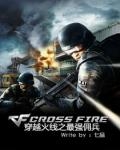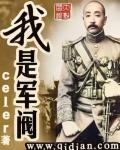Chapter 262
By early summer, the defeat of the German Third Reich had become a consensus around the world. Perhaps only Hitler himself, hiding in the bunker, was unwilling accept this.
The Soviet offensive front was less than 60 kilometers away from Berlin. In the city, the rumbling of artillery fire from the east could already be heard. Of course, for the citizens of Berlin, no one cared about the faint sound of gunfire. In comparison, they were more concerned about the Soviet fighter planes that flew over the city every day.
Comrade Stalin developed a new evil taste. He specifically issued orders to the air force supporting the front-line battles, requiring the Air Force to take the initiative to seek opportunities to compete with the German Air Force. At the same time, routine bombing missions must be carried out on Berlin every day.
In fact, the Soviet Red Army began bombing Berlin after retaking Tallinn. As early as 1941, the Soviet Long-Range Air Force carried out three bombings on Berlin from Ezerli Island in Tallinn. However, as the German army captured Tallinn, similar bombings stopped.
With the recovery of Tallinn, the Soviet army immediately repaired the airport on Ezerli Island and resumed this bombing operation, which had little effect but outstanding political significance. From the airport on Ezerli Island, long-range bombers need to fly for seven hours to complete a bombing mission, and they are likely to be attacked by German fighter planes on the way, resulting in heavy losses.
However, with the end of the Battle of Poznan, the Soviet Air Force moved to the Polish border area. From the airport here, it can fly to Berlin and back in one or two hours. The bomber fleet can also be escorted by fighter jets, which greatly improves its effectiveness.
The 16th Air Force Group under the command of Rudenko was mainly responsible for carrying out all the air raids on Berlin after the Battle of Poznan. These air raids were indiscriminate and followed the idea that Comrade Stalin had learned from Hitler: to wipe Berlin off the map and make it a geographical term.
From the end of March to mid-May, the 16th Air Force carried out hundreds of bombings on Berlin, completely turning the city into ruins. Of course, the losses suffered by the Soviet Air Force were also staggering in the process, but Rudenko always got the planes and pilots he needed. By mid-to-late May, when the bombing officially stopped, the strength of the 16th Air Force and the number of its fighter planes not only did not decrease, but increased.
Compared with the Soviets, the German air force was exhausted in the one and a half months of air raids. On the one hand, the war on both the eastern and western fronts fell into a passive state, and the strategic depth became increasingly narrow. On the other hand, as the battlefield progressed, the controlled area gradually declined, and the military industrial strength supporting the war declined comprehensively. The loss of Romania, Hungary, and especially Czechoslovakia dealt a heavy blow to Germany's military industry, and the supply of weapons and equipment could no longer keep up.
Now, Germany’s existing troops and weapons and equipment are almost in short supply as they are consumed, making it difficult to achieve effective supply.
In fact, when the war reached this point, the wisest choice for the German army was to surrender directly. However, Hitler's stubbornness cruelly delayed the war, and in the end, the ordinary citizens of Berlin had to pay the price.
No one cares about the fate of ordinary people, let alone the fate of ordinary people in the enemy country. Berlin recruited a large number of elderly people and children to serve as national commandos. This in itself has declared that the entire Berlin is a fascist base. Therefore, in preparing for the attack, neither the Soviet army nor the Western Allies will show any mercy.
When the 1st Belorussian Front formed a salient on the Oder River line and switched from offense to defense, in addition to the fighting on the southern front, the 3rd Belorussian Front on the north and a group army on the right wing of the 2nd Belorussian Front also began a sweep of East Prussia.
East Prussia is very important to Germany. It is not only the birthplace of the German military spirit, but also an economic center. Therefore, in addition to the German mainland, East Prussia's defense is the most solid. Here, in addition to a large number of permanent fortifications, there is also a heavy force group with a total strength of more than 600,000. In addition, in the Baltic Sea, there is also the German Navy's 2nd Battle Group, which can provide fire support for land battles.
In order to sweep across East Prussia and annihilate the German troops entrenched in this area, thus eliminating the flank threat of the Soviet army's attack on Berlin , the 3rd and 2nd Belorussian Fronts mobilized a total of 14 combined arms armies plus 4 tank armies, a powerful force of more than 1.6 million people. In terms of weapons and equipment, this Soviet army was equipped with nearly 26,000 artillery pieces, nearly 4,000 tanks, and more than 3,000 aircraft.
Such a large-scale corps launched a full-scale offensive against the German army on a 580-kilometer front from Memel on the Baltic Sea coast in the north to Modlin north of Warsaw in the south. It swept through the entire East Prussia like a torrent of wind and rotten wood, and completely defeated the German troops commanded by Reinhardt.
It was during the Battle of East Prussia that the command art and wisdom of the Soviet grassroots commanders were fully demonstrated. In the process of pursuing the German Second Army, the 31st Tank Brigade of the 29th Tank Army of the Soviet Army created a classic: in the German-occupied city of Elbing, the tanks of the brigade took advantage of the night, turned on the lights, and rushed directly into the city. The German troops defending the city were unprepared and thought that their tanks were crossing the border. By the time they reacted, the Soviet tanks had already crossed the city. As a result, it was this unit that arrived at the Frisch Bay first the next day, cutting off the German Second Army's retreat to the west, and eventually forcing the German troops to retreat into the Danzig area.
It was in East Prussia that the Soviet army launched a frenzied revenge against the Germans for their previous actions in the Soviet Union. In the Soviet Union, whenever the German army retreated, they would burn villages and towns, blow up factories and mines, poison water sources, steal all livestock, etc., but in East Prussia, the German army did not destroy anything, they even retained important power supply facilities.
However, this time the Soviet army played the role of destroyers. Every time they captured a city, they would demolish everything, whether it was a factory, warehouse, or farm. As long as it could be demolished, it would be demolished, not even a wooden beam would be left behind.
The looting operation ordered by the top directly led to disastrous consequences. The hatred between ethnic groups and the poor peasant origins made the Soviet soldiers extremely hate the wealthy German middle class. As a result, atrocities such as robbery and rape became a common phenomenon in East Prussia. Even the military commissioners who were responsible for enforcing military discipline would not intervene in such matters, which made the phenomenon worse.
The Soviet army's brutal actions created a large number of refugees in East Prussia. On the road to Pillau, more than 2 million German refugees braved the rain and traveled west. This hellish scene dealt a heavy blow to the morale of the German army in East Prussia. On the eve of the Battle of Königsberg, the German officers and soldiers were extremely depressed. The number of deserters in half a month reached nearly 20,000, forcing the German military police to take bloody measures and hang the captured deserters along the railway as a warning.
By May, the German army had actually reached the end of its road. However, the Soviet army was not in good shape either. The huge losses in manpower, coupled with the increasingly long supply lines, made it impossible to supply logistical supplies and new troops. From mid-to-late May, with the approval of the Moscow headquarters, Yuri began a comprehensive reorganization of the infantry units participating in the war on the front line.
The previous infantry division organization has been abolished, and there are three types of new infantry divisions: 3600-type infantry division, 4000-type infantry division and 4500-type infantry division. As the name suggests, the three types of infantry divisions are determined according to the number of troops.
The 3600-type infantry division has only 12 infantry companies, equivalent to a regiment in the past. Each infantry company has only 76 people, only half the number of infantry companies in the past, but each infantry company is equipped with 10 to 15 machine guns. In order to strengthen the firepower of the infantry division to make up for the lack of manpower, each infantry division is equipped with a divisional artillery regiment, and the divisional artillery regiment has abolished artillery with a caliber of less than 57 mm and replaced it with artillery with a caliber of 57-76 mm. At the same time, 85 mm mortars have replaced 50 mm mortars. In addition, each divisional artillery regiment is specially equipped with 122 mm howitzers and SU-76 self-propelled artillery.
Although the reorganization of the infantry division reduced the number of troops, it greatly improved the firepower, which also brought about a huge change in the combat style of the Soviet infantry division. The scene of human wave charge during the attack disappeared, and was replaced by more and more skilled skirmish line attacks coordinated with the slow advance of artillery barrage cover.
In this regard, Scherner, commander of the German Army Group Center, made the following judgment: "The Bolsheviks have very few infantrymen, and their combat depends entirely on their equipment advantages."
However, in Yuri's view, this judgment was not an insult but a compliment. At least, it sounded much better than relying on sacrificing manpower to win.
For Yuri, the experience of the reorganization of the troops at the end of the war had a great impact on his military thinking. He shifted from emphasizing the art of command to emphasizing the advantage of firepower. In Yuri's view, the war model followed by the Americans in the previous life was the correct one, which was to rely on the advantages of equipment and weapons to minimize casualties . This was a process of transformation from an extensive war model to a technical one.
As a result, these troops attempting to break out were first blocked by intensive Soviet artillery fire, and then encountered strafing and crushing by Soviet armored forces in the city of Papo. In the end, only less than 700 people escaped the encirclement.
Ironically, Wildenbruch, the commander of the 9th SS Mountain Corps, who had shown his willingness to die, did not follow the troops to break out. Instead, he hid in the city's sewers with his chief of staff and the entire headquarters. After the German army was completely annihilated, he came out of the sewers and surrendered to the Soviets. He became the highest-ranking SS general captured by the Soviets since the outbreak of the war.






